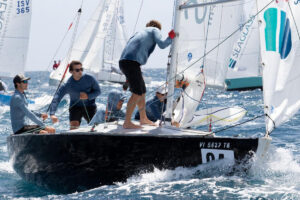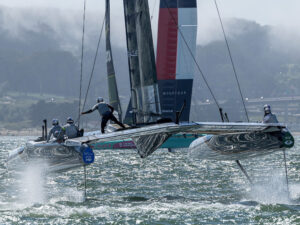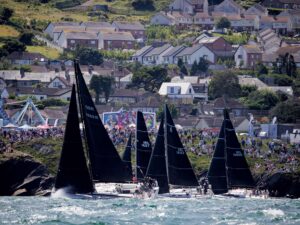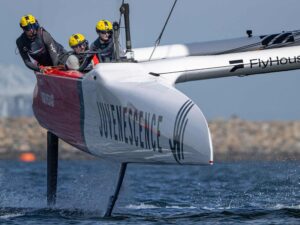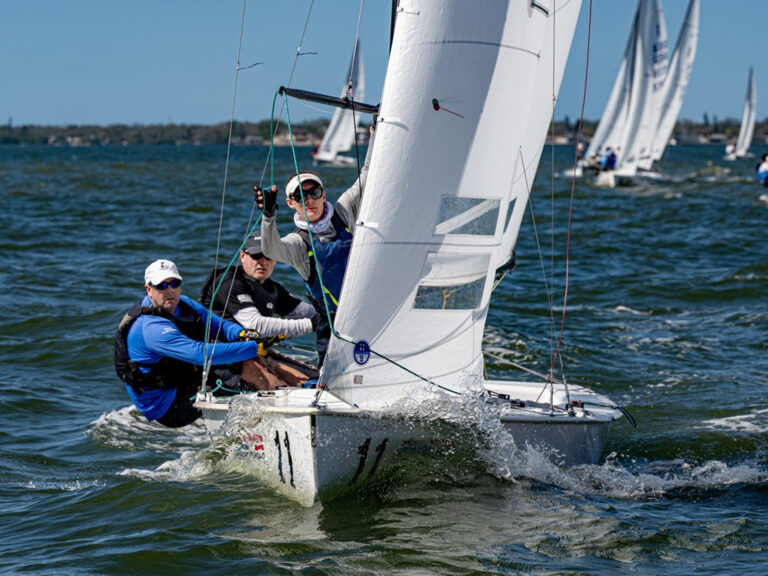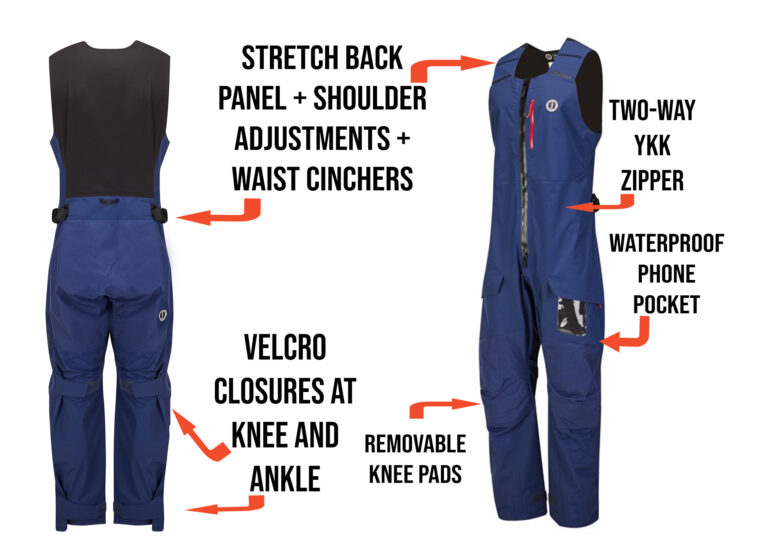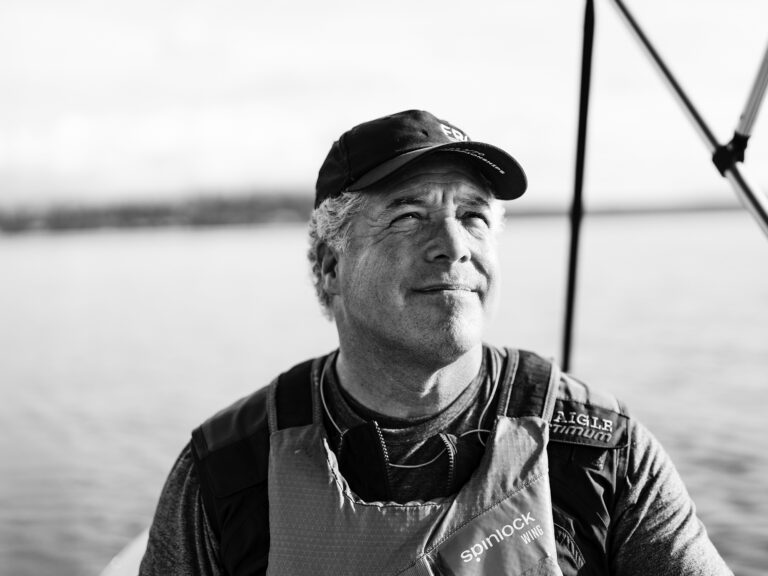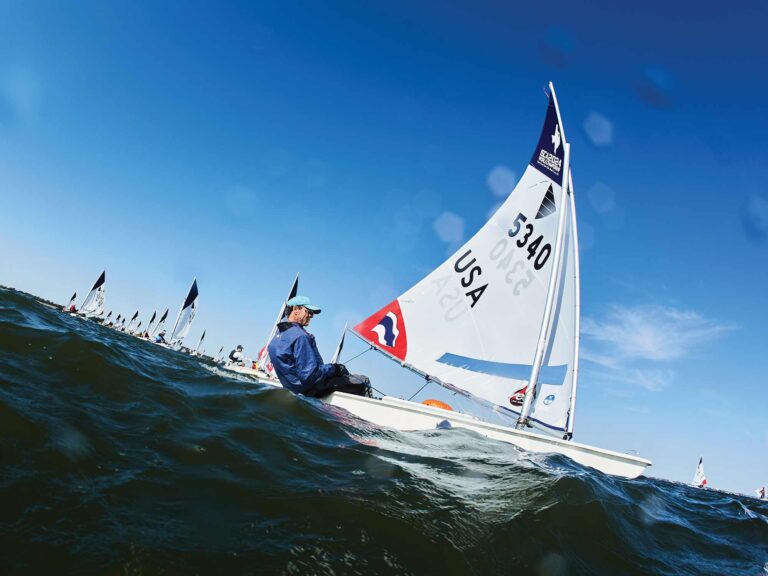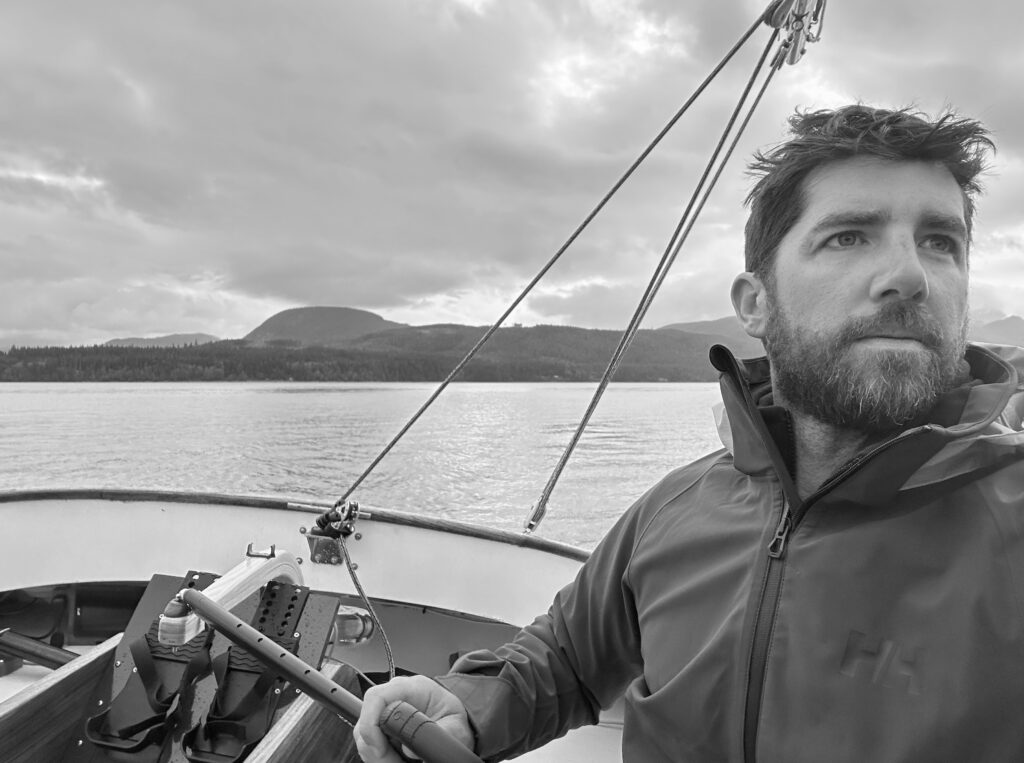
Join Adam Cove and Sailing World’s Dave Reed at the Helly Hansen Sailing World Regatta Speaker Series at Eastern YC in Marblehead (Massachusetts) on July 25 at 6:30 PM for a riveting Race to Alaska debrief and information session. Additional details here.
Facing breaking waves, roaring headwinds and raging currents, Massachusetts native, Adam Cove, recognized the limits of himself and his customized Marshall Cat 18 when he ran for cover in Canada’s Queen Charlotte Sound during this summer’s maniacal Race to Alaska. It was one of many pivotal decisions along the 750-mile route from Port Townsend, Washington, to Ketchikan, Alaska, that got Cove to the finish in record time and into the history books of this unique and extreme adventure race.
“There were a lot of difficult parts, but that was the toughest,” Cove says. “Coming out of Johnstone Strait, which is a very narrow area where the winds really funnel and the currents are 2.5-plus knots.”
As he made the exit and tacked his way north, Cove was quickly contemplating his next move. The waves, 6 to 7 feet, were breaking and unruly. “I’d been short-tacking upwind through square waves for over a day and decided to take the first exit out of Johnstone. I thought it couldn’t get worse, but I was wrong. I was taking on heavy spray and risking a lot in that sea state. Making limited progress to weather, I turned around and tucked in behind Malcolm Island.”
On a tenuous anchor along the rocky coast he stayed put for nearly 5 hours and rested, and once the thermal gusts relented and the current eased, he set out again, making way for Ketchikan and the eventual solo monohull race record.
For Cove, the now bi-annual Race to Alaska proved to be as challenging as the brochure promised. Unpredictable winds, sweeping currents, rocks, logs, bears and hazards galore were only part of the allure for the 36-year-old marine industry consultant and Technical Editor for Sail magazine. Finishing was a victory unto itself and for Cove, but as the top solo monohull sailor with two race records in hand, he’s now part of lore of the America’s most difficult race.
As an experienced offshore sailor looking for the next adventure after sailing solo to and from the Caribbean from the south coast of Massachusetts, Cove says he’d been following the race for a few years. It was always in the back of his mind and last winter he found himself contemplating it with vigor.
“My wife said, ‘Why don’t you just do it?”
And that was enough to set the project in motion. His wife also suggested entering with a Marshall Cat 18, the iconic New England classic of the early 1960s, which is still in production at the Marshall Marine Corporation in South Dartmouth, Massachusetts. Conveniently enough, Cove’s brother runs Marshall’s boatyard side, and owner, Geoff Marshall, had an 18 available in the brokerage pen.
“I didn’t initially appreciate the community that this race entry would build,” Cove says. “Cat boat fanatics are all across the country and it seemed all of New England, and especially everyone in my town, rallied behind me. It was a blast proving the Marshall Sanderling catboat can hold her own on the racecourse and is just as relevant as when she was first built in the 60s. It also doesn’t hurt to be racing a pretty boat.”
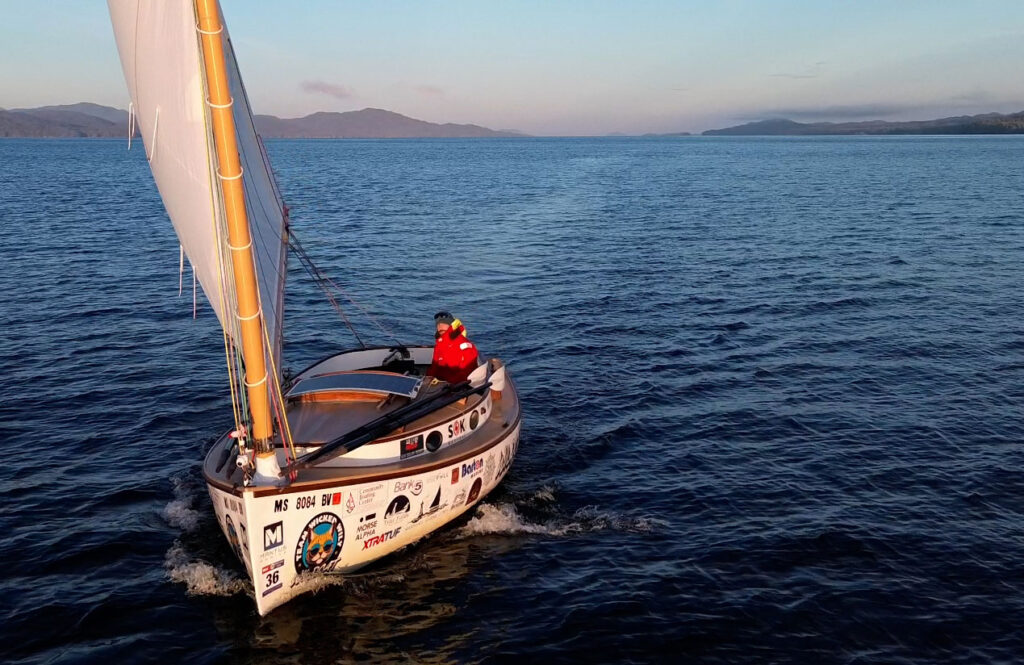
For five months and then some, Cove, his family, and support team upgraded the boat, the hardware, electronics and electrical systems, sails, and rigging, and tested systems on the water in the early spring. One of the most consuming projects was building the human-propulsion component—a rowing setup that was no easy feat.
“We did lots of mockups and testing,” Cove says. “It had to be ergonomic for rowing, which required we build a custom tiller, but we came up with a beautiful solution.”
With all the necessary bits onboard and sponsor decals applied to Wildcat, Cove hitched the boat to his gray Toyota Tundra in late May and trekked to Port Townsend. Driven with anticipation, he was also realistic that Wildcat would never be fast enough to conquer the fleet outright. But this race isn’t about winning. It’s about endurance and achieving something rare: “It’s said that fewer people finished this race than have been to space,” Cove says, acknowledging in the same breadth that that race hasn’t been around as long as the space race. But still, it’s not for the unprepared.
“A big part is setting expectations and goals,” Cove says. “I knew I wasn’t going to win because of the much larger, fully-crewed monohulls and fast trimarans, but it was certainly about enjoying the journey. It’s a beautiful but dangerous racecourse and I was hoping to push myself as hard as possible.”
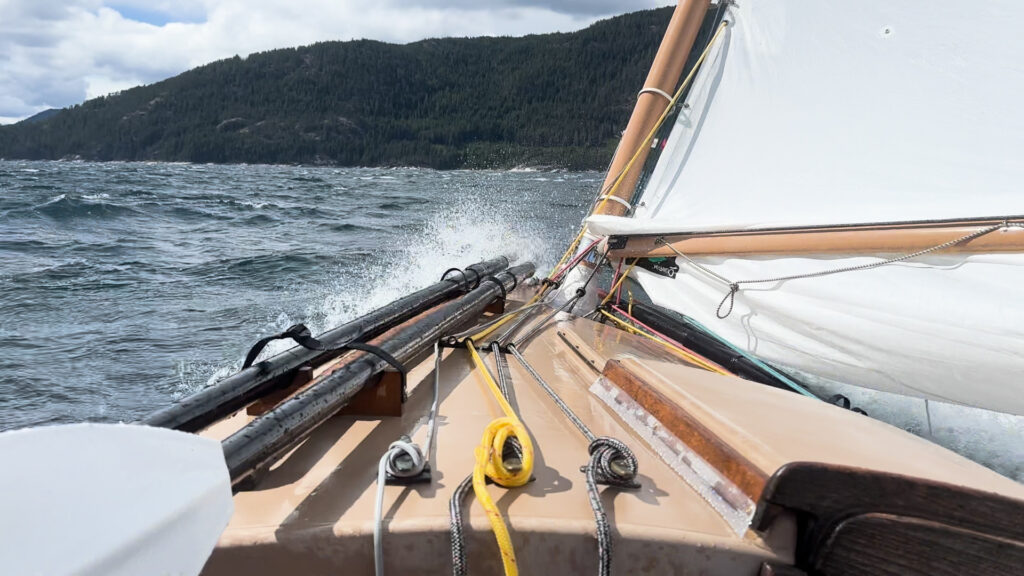
His goal was to complete the 750-mile meandering course in 14 days, but the final outcome was “10 days 22 hours and some odd minutes.” That earned Cove the race record as the fastest singlehanded monohull and the fastest monohull less than 20 feet.
“There are many stories to be told of this race,” Cove says, “But the real story is looking at the entirety of the race and recognizing how different it is than any racing experience I’ve ever had. It’s such a unique group of competitors. They’re all tough and smart, familiar with the wilderness and being able to problem solve.”
Now having experienced it firsthand, The Race to Alaska, Cove says, is far harder than a Bermuda Race or equivalent, where weather and strategies play out in the long term. In the Race to Alaska, at any time and anywhere between points A and B, he says, “you have to be paying attention. You’re making decisions every 20 minutes because there’s something different around every corner. The problem solving and strategy side is fascinating. That’s the neat and compelling story of this race: if you want something a lot more challenging, this is the best race out there.”

